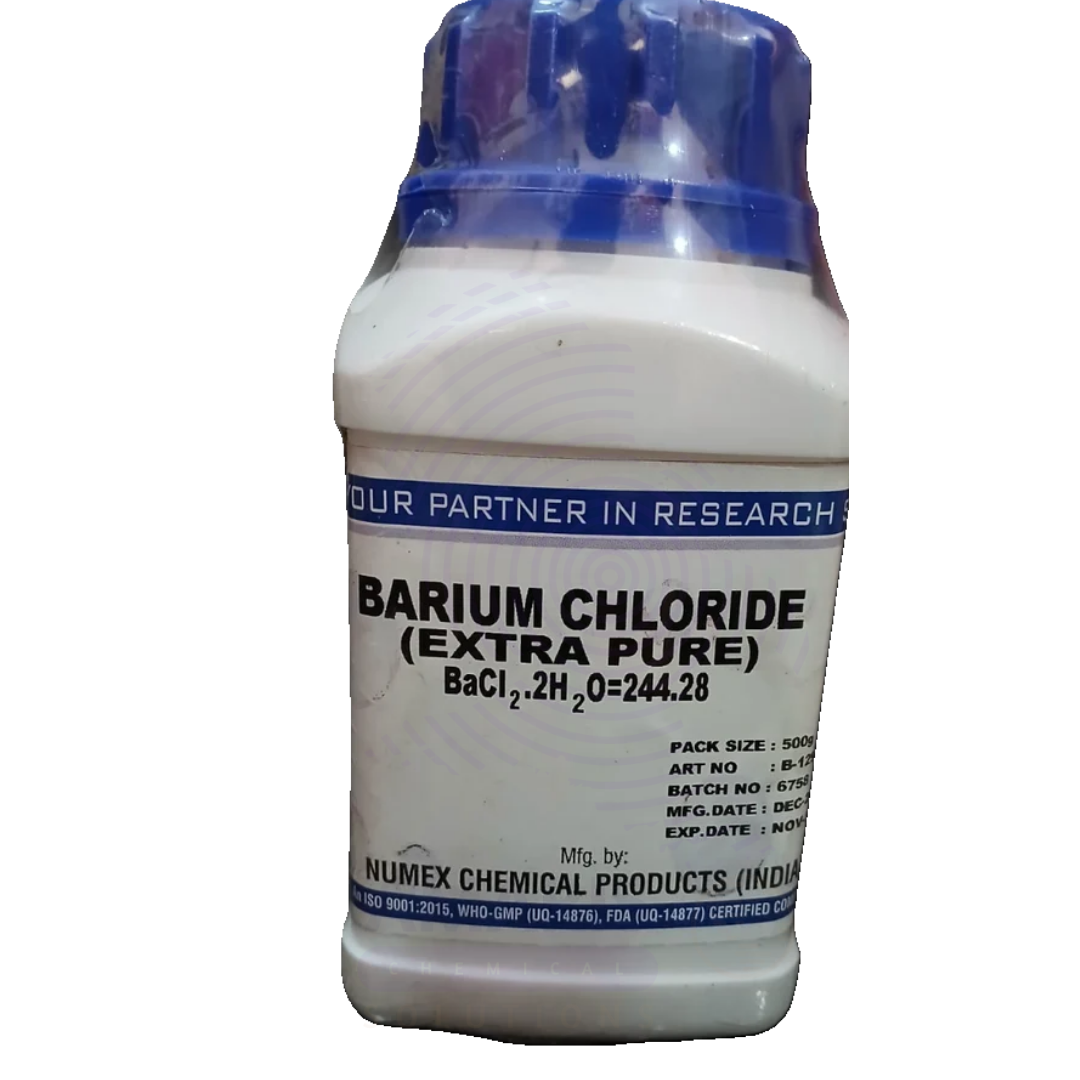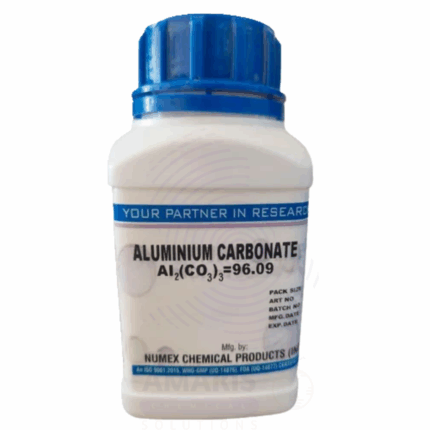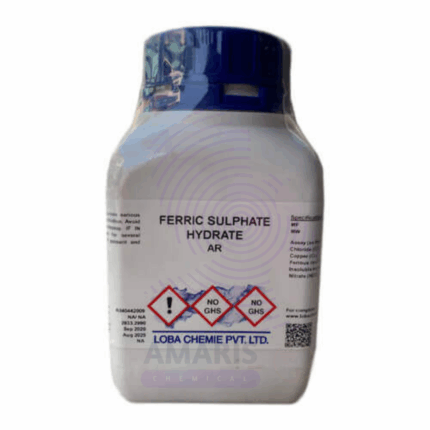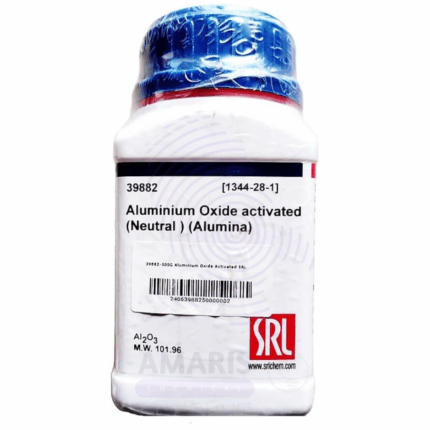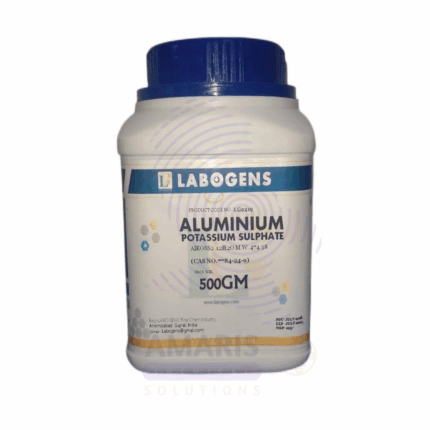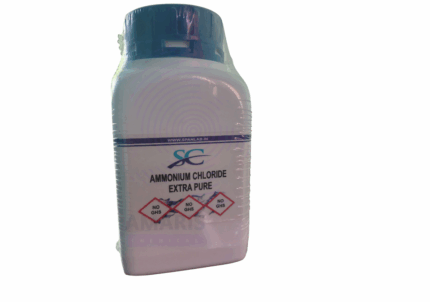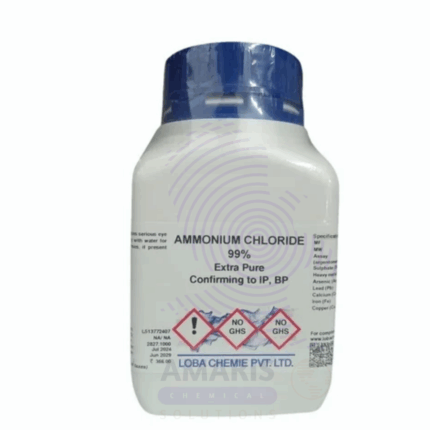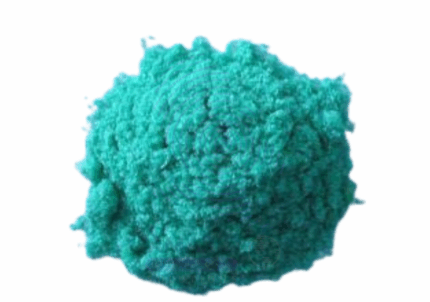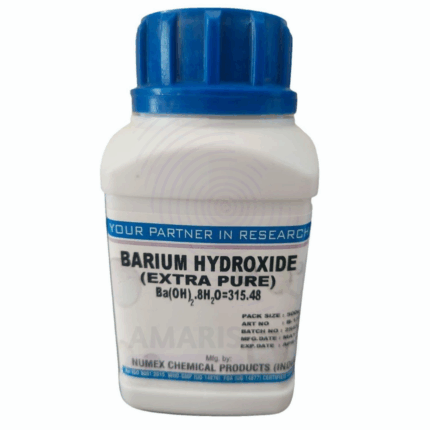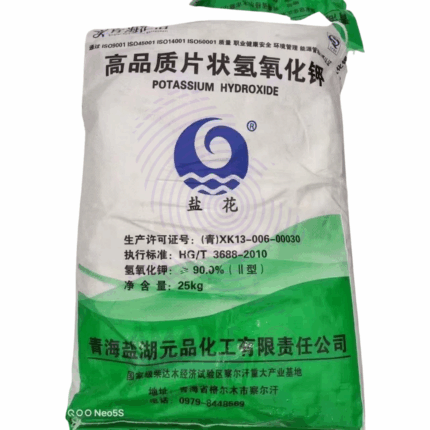Back to products
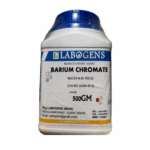

Barium Chromate Extra Pure
$ 17.00 Original price was: $ 17.00.$ 16.98Current price is: $ 16.98.
Barium Chloride Extra Pure
$ 18.00 Original price was: $ 18.00.$ 17.67Current price is: $ 17.67.
Whatsapp Order
Barium Chloride Extra Pure is a high-purity, white crystalline chemical compound with the formula BaCl₂·2H₂O (dihydrate form) or BaCl₂ (anhydrous form). It is highly soluble in water and is commonly used in analytical chemistry, particularly for sulfate ion detection, as well as in laboratory synthesis and various industrial applications. Known for its reactivity and toxicity, it must be handled with care in controlled environments. Its extra pure grade ensures suitability for research, quality control, and specialized chemical processes requiring high-purity reagents.
Description
Table of Contents
Toggle
Barium Chloride Extra Pure
Primary Uses
- Reagent for Sulfate Ion Detection
- Widely used in qualitative analysis to test for SO₄²⁻, forming insoluble barium sulfate (BaSO₄) — a key gravimetric determination method.
- Source of Barium Ions in Inorganic Reactions
- Supplies Ba²⁺ ions for precipitation reactions, ionic strength control, and crystal lattice formation in coordination studies.
- Flame Test Reagent
- Produces a green flame, making it useful in elemental identification and flame spectroscopy demonstrations.
- Standard Salt for Conductivity and Ion Mobility Studies
- Commonly used in solution conductivity experiments and studies involving cation migration.
- Precursor for Barium-Based Salt Synthesis
- Reacts with sodium carbonate, phosphate, or chromate to form other barium salts for lab-scale synthesis and crystal preparation.
Secondary Uses
- Teaching Reagent for Precipitation and Solubility Experiments
- Demonstrates solubility rules, Ksp (solubility product), and common ion effect in student labs.
- Study of Double Displacement and Ionic Reactions
- Useful in illustrating ionic reactions in aqueous solution involving group 2 elements.
- Environmental Testing of Sulfates in Water
- Applied in water analysis to detect sulfate contamination using simple dropwise precipitation tests.
- Synthesis of Barium-Based Coordination Complexes
- Acts as a starting material in forming barium-ligand complexes for structure and reactivity studies.
- Demonstration of Crystallization and Recrystallization
- Soluble in water and ethanol, making it a good candidate for crystal growth and purification studies.
Additional information
| PACK SIZE |
500 grams Plastic Tin |
|---|
KEY PRODUCT FEATURES
1. Basic Identification Attributes
- Chemical Name: Barium Chloride (commonly as Dihydrate)
- CAS Number:
- Anhydrous: 10361-37-2
- Dihydrate (commonly used): 10326-27-9
- HS Code: 28273990 (Other barium salts)
- Molecular Formula: BaCl₂ · 2H₂O (dihydrate)
- Synonyms:
- Barium dichloride
- Barium(II) chloride
- Chlorobarium
- Barium chloride dihydrate
2. Physical & Chemical Properties
- Physical State: Solid (crystalline powder or flakes)
- Color & Odor: White; odorless
- Boiling Point: Decomposes before boiling
- Melting Point: ~113 °C (dihydrate loses water)
- Density/Specific Gravity: ~3.86 g/cm³ (anhydrous), ~3.1 g/cm³ (dihydrate)
- Solubility:
- Water: Soluble (~37 g/100 mL at 20 °C)
- Ethanol: Insoluble
- pH Level: ~6–8 (in 5% solution)
- Vapor Pressure: Negligible
- Flash Point: Not flammable
- Autoignition Temperature: Not applicable
- Viscosity: Not applicable
3. Safety & Hazard Attributes
- Hazard Class (GHS):
- Acute Toxicity – Oral (Category 3)
- Eye Irritation (Category 2A)
- Specific Target Organ Toxicity – Repeated Exposure (Category 2)
- NFPA Ratings:
- Health: 3
- Flammability: 0
- Reactivity: 0
- Exposure Limits:
- OSHA PEL: 0.5 mg/m³ (as soluble barium compounds)
- ACGIH TLV: 0.5 mg/m³ (as Ba)
- Reactivity:
- Stable under normal lab conditions
- Reacts with strong acids (release of toxic barium ions)
4. Storage & Handling Attributes
- Storage Conditions:
- Store in tightly sealed containers in a cool, dry, ventilated area
- Hygroscopic — avoid moisture
- Incompatible Materials:
- Strong acids, sulfates, oxidizers
- Container Type:
- Glass or HDPE containers
- Shelf Life & Expiration Date:
- ~3 years if stored properly
- Special Handling Requirements:
- Use gloves, safety goggles, and dust mask
- Avoid contact with skin and inhalation
5. Regulatory & Compliance Attributes
- Regulatory Status:
- Listed in TSCA, REACH
- Subject to control due to toxicity of soluble barium
- Transportation Restrictions:
- Not regulated as hazardous in small lab quantities
- Waste Disposal Method:
- Dispose as hazardous waste
- Do not release to environment or drains
6. Environmental & Health Impact
- Ecotoxicity:
- Highly toxic to aquatic organisms (especially due to soluble barium ions)
- Persistence in Environment:
- Inorganic; non-degradable but may precipitate as insoluble barium salts
- Carcinogenicity/Mutagenicity:
- Not classified as carcinogenic
- Biodegradability:
- Not biodegradable
SAFETY HANDLING PRECAUTIONS
SAFETY PRECAUTIONS
- Personal Protective Equipment (PPE):
- Lab coat, chemical-resistant gloves (nitrile recommended), and safety goggles.
- Use a dust mask or operate in a fume hood to prevent inhalation of fine particles.
- Handling:
- Avoid inhalation, ingestion, and skin or eye contact.
- Prevent dust formation and avoid contamination with acids or moisture.
- Do not eat, drink, or smoke while handling.
- Storage:
- Store in a tightly sealed container in a dry, cool, and well-ventilated area.
- Protect from moisture, acids, and incompatible substances.
- Clearly label container as Toxic and store in a designated chemical cabinet.
- Environmental Precautions:
- Prevent release into drains, soil, or waterways—extremely toxic to aquatic life.
- Collect and dispose of spills with care using approved hazardous waste procedures.
FIRST AID MEASURES
- Inhalation:
- Move to fresh air immediately.
- Administer oxygen if breathing is difficult.
- Seek urgent medical attention—inhalation may cause systemic toxicity.
- Skin Contact:
- Wash skin with plenty of water and soap.
- Remove contaminated clothing.
- Seek medical advice if irritation or symptoms occur.
- Eye Contact:
- Rinse thoroughly with water for at least 15 minutes.
- Lift eyelids occasionally.
- Seek immediate medical attention—may cause severe irritation or burns.
- Ingestion:
- Do not induce vomiting.
- Rinse mouth with water.
- If conscious, give water or milk to dilute.
- Seek emergency medical care—barium chloride is highly toxic and may cause:
- Hypokalemia
- Muscle weakness or paralysis
- Cardiac arrhythmias
- Seizures or death
FIRE FIGHTING MEASURES
- Extinguishing Media:
- Use dry chemical, CO₂, foam, or water spray depending on the surroundings.
- Fire & Thermal Hazards:
- Not flammable, but decomposes at high temperatures, releasing:
- Toxic barium oxide (BaO) fumes
- Hydrogen chloride (HCl) gas
- Not flammable, but decomposes at high temperatures, releasing:
- Protective Equipment:
- Wear self-contained breathing apparatus (SCBA) and full protective gear.
- Firefighting Instructions:
- Keep containers cool with water spray.
- Avoid inhaling combustion products.
- Prevent contaminated runoff from entering drains or water bodies.
Related products
Aluminium Carbonate Extra Pure
Aluminium Carbonate Extra Pure is a high-purity, white, odorless powder primarily used as a reagent in laboratory settings for analytical and research applications. Though not commonly stable under standard conditions, it is valued in controlled experimental procedures involving the study of aluminum compounds, buffer systems, and inorganic reactions. Its extra pure grade ensures low levels of contaminants, making it suitable for precise qualitative and quantitative analysis. Due to its sensitivity to moisture and tendency to decompose into aluminum hydroxide and carbon dioxide, it must be handled with care and stored in airtight containers under dry conditions to maintain chemical integrity during laboratory use.
Aluminium Ferric Sulphate Extra Pure
Aluminium Ferric Sulphate Extra Pure is a high-purity, yellowish to light brown crystalline solid composed of aluminum, iron, and sulfate ions, commonly used in laboratory settings for analytical, coordination, and inorganic chemistry research. Its dual-metal composition makes it valuable for studying metal ion interactions, flocculation processes, and as a reagent in qualitative analysis of phosphates and tannins. The compound also finds application in preparing standard solutions and in experiments related to coagulation and sedimentation. Its extra pure grade ensures consistent performance with minimal contamination, making it ideal for precise, controlled experimentation. It should be stored in tightly sealed containers in a dry, cool environment to maintain stability and prevent moisture uptake.
Aluminium Oxide Active Neutral Extra Pure
Aluminium Oxide Active Neutral Extra Pure is a high-purity, fine white powder known for its high surface area and neutral pH, making it ideal for chromatography, adsorption, and catalyst support in laboratory research. Its active form ensures excellent capacity for separating and purifying organic compounds without altering their chemical structure, especially in column chromatography applications. Commonly used in analytical, organic synthesis, and material science laboratories, it provides consistent performance in adsorption studies, drying of solvents, and reaction monitoring. The extra pure grade ensures extremely low levels of impurities, suitable for high-precision experimental work. To maintain its activity, it should be stored in airtight containers away from moisture and reactive chemicals.
Aluminium Potassium Sulphate Hydrated Extra Pure
Aluminium Potassium Sulphate Hydrated Extra Pure, commonly known as potash alum, is a high-purity, colorless to white crystalline compound containing water of crystallization. It is widely used in laboratory settings for analytical chemistry, especially in the preparation of standard solutions, precipitation reactions, and as a source of aluminum ions. Its astringent and antiseptic properties also make it useful in biochemical and pharmaceutical experiments. The hydrated form offers improved handling and solubility in water, which supports its use in buffer systems and crystal growth studies. With minimal impurities, the extra pure grade ensures consistent and reliable results in sensitive research applications. It should be stored in a dry, cool environment in well-sealed containers to preserve its quality and prevent moisture loss.
Ammonium Chloride Extra Pure
Ammonium Chloride Extra Pure is a high-purity, white crystalline salt widely used in laboratory chemistry as a source of ammonium ions and chloride ions for analytical, inorganic, and biochemical applications. It plays a key role in preparing buffer solutions, especially in conjunction with ammonia, and is commonly used in qualitative analysis, electrochemical studies, and metal treatment experiments. In addition, it serves as a reagent in synthesis reactions and as a nitrogen source in microbial culture media. The extra pure grade ensures high consistency and minimal contaminants, making it suitable for precise and sensitive laboratory work. It should be stored in a cool, dry place in well-sealed containers to maintain stability and prevent moisture absorption.
Ammonium Cupric Chloride Extra Pure
Ammonium Cupric Chloride Extra Pure is a high-purity, greenish-blue crystalline compound composed of ammonium and copper(II) ions combined with chloride. It is primarily used in laboratory chemistry for etching, electroplating studies, and as a reagent in qualitative analysis and coordination chemistry. This compound is particularly valuable in experiments involving complex ion formation and redox behavior of transition metals. Its extra pure grade ensures high consistency and low levels of interfering impurities, supporting precise analytical and research work. Due to its sensitivity to light and moisture, it should be stored in tightly sealed, opaque containers in a cool, dry environment to maintain stability and reactivity.
Barium Hydroxide Hydrate Extra Pure
Barium Hydroxide Hydrate Extra Pure is a high-purity, white crystalline compound containing eight molecules of water of crystallization. It is widely used in laboratory chemistry as a strong base in titration, qualitative analysis, and inorganic synthesis. Its high solubility in water and strong alkalinity make it valuable for neutralization reactions, preparation of barium salts, and as a reagent for detecting sulfates, carbonates, and phosphates. In analytical applications, it is often used where precise pH control and minimal contamination are critical. The extra pure grade ensures consistent performance in high-accuracy experiments. It should be handled with care and stored in a tightly sealed container in a cool, dry place, as it is caustic and sensitive to carbon dioxide in the air, which can lead to carbonate formation.
Potassium Hydroxide
Potassium Hydroxide is a highly concentrated, caustic alkaline chemical available as a solid (pellets, flakes) or concentrated aqueous solution. It is a strong base widely used in industrial processes, chemical manufacturing, and as a reagent. Potassium Hydroxide provides excellent neutralizing, saponifying, and cleaning properties and is essential in producing potassium soaps, biodiesel, fertilizers, and various chemical compounds. Its high purity and concentration (90%) make it suitable for demanding applications requiring strong alkalinity.


 Preservatives(food)
Preservatives(food) Flavor Enhancers
Flavor Enhancers Acidulants
Acidulants Sweeteners
Sweeteners Antioxidants
Antioxidants Colorants(food)
Colorants(food) Nutraceutical Ingredients (food)
Nutraceutical Ingredients (food) Nutrient Supplements
Nutrient Supplements Emulsifiers
Emulsifiers
 Collectors
Collectors Dust Suppressants
Dust Suppressants Explosives and Blasting Agents
Explosives and Blasting Agents Flocculants and Coagulants
Flocculants and Coagulants Frothers
Frothers Leaching Agents
Leaching Agents pH Modifiers
pH Modifiers Precious Metal Extraction Agents
Precious Metal Extraction Agents
 Antioxidants(plastic)
Antioxidants(plastic) Colorants (Pigments, Dyes)
Colorants (Pigments, Dyes) Fillers and Reinforcements
Fillers and Reinforcements Flame Retardants
Flame Retardants Monomers
Monomers Plasticizers
Plasticizers Polymerization Initiators
Polymerization Initiators Stabilizers (UV, Heat)
Stabilizers (UV, Heat)
 Antifoaming Agents
Antifoaming Agents Chelating Agents
Chelating Agents Coagulants and Flocculants
Coagulants and Flocculants Corrosion Inhibitors
Corrosion Inhibitors Disinfectants and Biocides
Disinfectants and Biocides Oxidizing Agents
Oxidizing Agents pH Adjusters
pH Adjusters Scale Inhibitors( water)
Scale Inhibitors( water)
 Antioxidants(cosmetic)
Antioxidants(cosmetic) Emollients
Emollients Fragrances and Essential Oils
Fragrances and Essential Oils Humectants
Humectants Preservatives
Preservatives Surfactants(cosmetic)
Surfactants(cosmetic) Thickeners
Thickeners UV Filters
UV Filters
 Fertilizers
Fertilizers Soil Conditioners
Soil Conditioners Plant Growth Regulators
Plant Growth Regulators Animal Feed Additives
Animal Feed Additives Biostimulants
Biostimulants Pesticides (Herbicides, Insecticides, Fungicides)
Pesticides (Herbicides, Insecticides, Fungicides)
 Active Pharmaceutical Ingredients (APIs)
Active Pharmaceutical Ingredients (APIs) Excipients
Excipients Solvents(pharmaceutical)
Solvents(pharmaceutical) Antibiotics
Antibiotics Antiseptics and Disinfectants
Antiseptics and Disinfectants Vaccine Adjuvants
Vaccine Adjuvants Nutraceutical Ingredients (pharmaceutical)
Nutraceutical Ingredients (pharmaceutical) Analgesics & Antipyretics
Analgesics & Antipyretics
 Analytical Reagents
Analytical Reagents Solvents(lab)
Solvents(lab) Chromatography Chemicals
Chromatography Chemicals Spectroscopy Reagents
Spectroscopy Reagents microbiology-and-cell-culture-reagents
microbiology-and-cell-culture-reagents Molecular Biology Reagents
Molecular Biology Reagents Biochemical Reagents
Biochemical Reagents Inorganic and Organic Standards
Inorganic and Organic Standards Laboratory Safety Chemicals
Laboratory Safety Chemicals Specialty Laboratory Chemicals(Special Laboratory Equipment)
Specialty Laboratory Chemicals(Special Laboratory Equipment)
 Demulsifiers
Demulsifiers Hydraulic Fracturing Fluids
Hydraulic Fracturing Fluids Scale Inhibitors(oil)
Scale Inhibitors(oil) Surfactants(oil)
Surfactants(oil) Drilling Fluids
Drilling Fluids
 Dyes and Pigments
Dyes and Pigments Bleaching Agents
Bleaching Agents Softening Agents
Softening Agents Finishing Agents
Finishing Agents Antistatic Agents
Antistatic Agents
 Admixtures
Admixtures Waterproofing Agents
Waterproofing Agents Sealants and Adhesives
Sealants and Adhesives Curing Compounds
Curing Compounds Concrete Repair Chemicals
Concrete Repair Chemicals Anti-Corrosion Coatings
Anti-Corrosion Coatings
 Surfactants(cleaning)
Surfactants(cleaning) Builders
Builders Enzymes
Enzymes Solvents (Cleaning)
Solvents (Cleaning) Fragrances
Fragrances
 Electronic Chemicals
Electronic Chemicals Catalysts
Catalysts Lubricants
Lubricants Photographic Chemicals
Photographic Chemicals Refrigerants
Refrigerants Automotive chemicals
Automotive chemicals Pyrotechnic Chemicals
Pyrotechnic Chemicals
 Biodegradable Surfactants
Biodegradable Surfactants Bio-based Solvents
Bio-based Solvents Renewable Polymers
Renewable Polymers Carbon Capture Chemicals
Carbon Capture Chemicals Wastewater Treatment Chemicals
Wastewater Treatment Chemicals
 Pigments
Pigments Solvents(paint)
Solvents(paint) Specialty Coatings
Specialty Coatings Binders/Resins
Binders/Resins Additives
Additives Driers
Driers Anti-Corrosion Agents
Anti-Corrosion Agents Functional Coatings
Functional Coatings Application-Specific Coatings
Application-Specific Coatings
 Fresh Herbs
Fresh Herbs Ground Spices
Ground Spices Whole Spices
Whole Spices Spice Blends
Spice Blends Dried Herbs
Dried Herbs
 Leavening Agents
Leavening Agents Dough Conditioners
Dough Conditioners Flour Treatments
Flour Treatments Fat Replacers
Fat Replacers Decoratives
Decoratives Preservatives(baking)
Preservatives(baking)
 Plasticizers & Softeners
Plasticizers & Softeners Reinforcing Agents
Reinforcing Agents Adhesion Promoters
Adhesion Promoters Vulcanizing Agents
Vulcanizing Agents Antidegradants
Antidegradants Blowing Agents
Blowing Agents Fillers & Extenders
Fillers & Extenders Accelerators & Retarders
Accelerators & Retarders